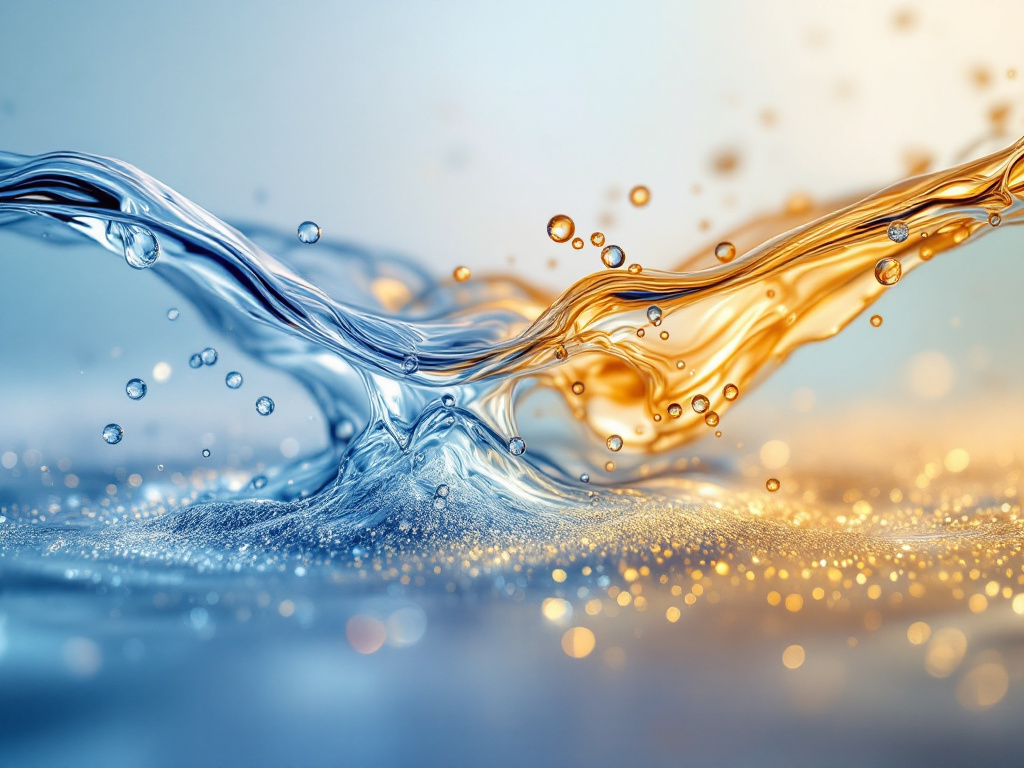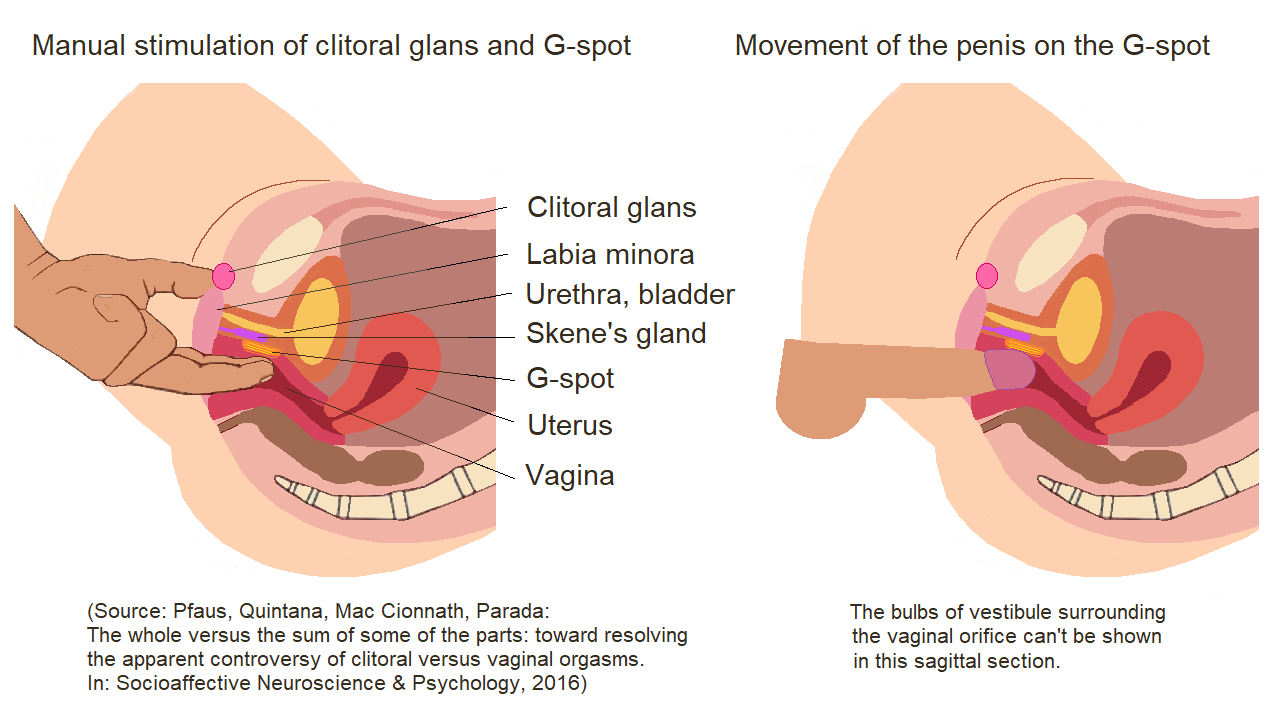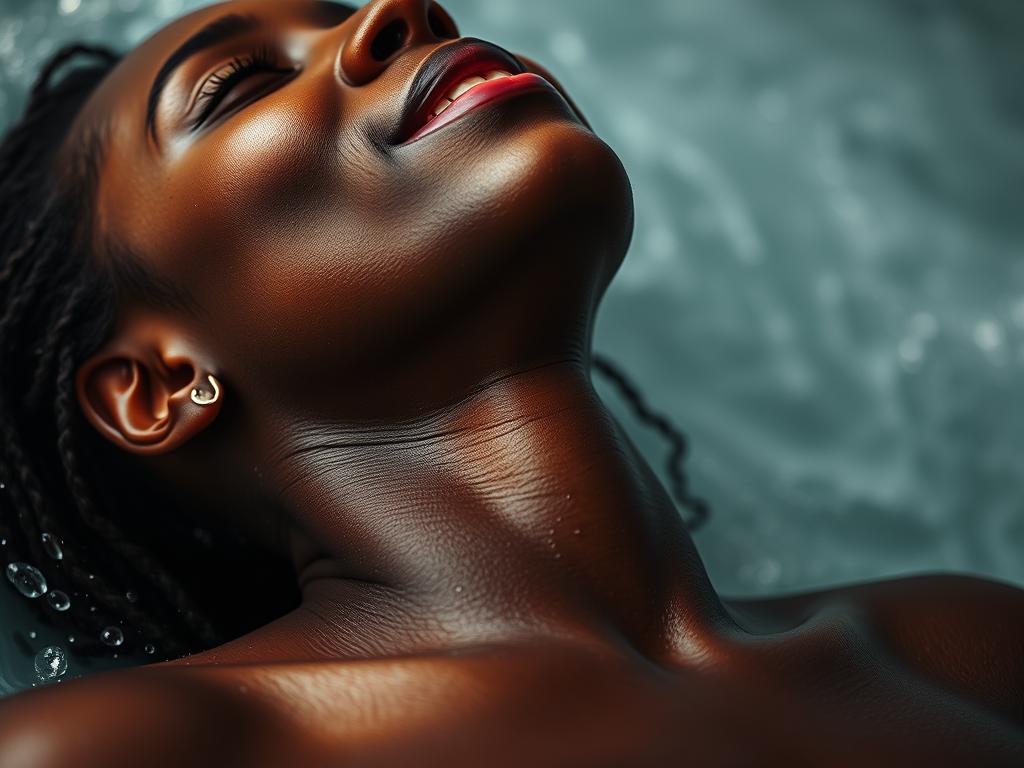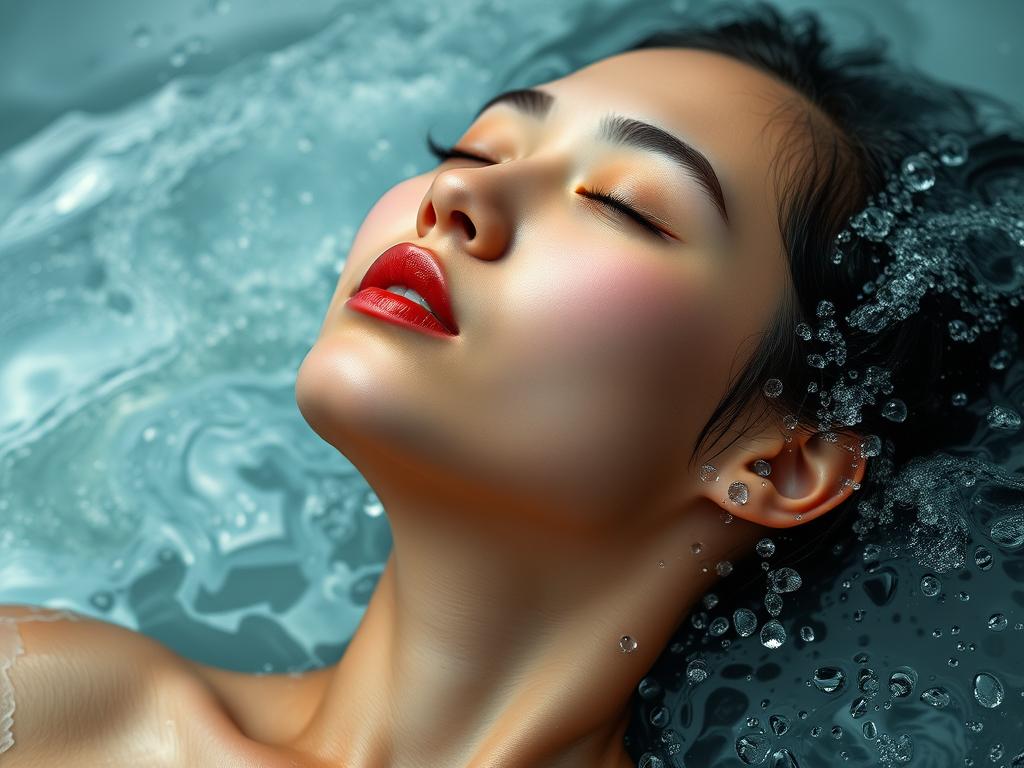
Is Squirting for You? Navigating the Myths and Realities
Introduction
Squirting has become a hot topic in sexual discourse, gaining both popularity and notoriety. While it is often celebrated as a remarkable sexual experience, it is also surrounded by myths, misconceptions, and debates about its nature. Understanding squirting is crucial in navigating these conversations and determining whether this phenomenon is for you. With a blend of scientific insights and cultural commentary, we’ll delve into what squirting truly is, its rising popularity, and the controversies that often accompany it.
Understanding Squirting
Squirting, often referred to as female ejaculation, is the expulsion of fluid from the urethra during sexual arousal or orgasm. The fluid originates from the Skene’s glands, also known as the female prostate, which are located near the urethra. This secretion can vary significantly in volume from person to person. For some, squirting may produce a large gush, while others might experience only a few drops.
It’s important to note that squirting does not necessarily accompany orgasm. While many individuals may squirt during climax, others may have the same physical release without experiencing orgasm, highlighting the unique and varied nature of female sexual response. Additionally, the fluid ejected is often not urine, though some studies have found traces of urine in squirting fluid due to the shared anatomical pathway. Understanding these nuances helps demystify the process and promotes a healthier conversation about female sexuality.
The Popularity and Controversy of Squirting
In recent years, squirting has seen a spike in popularity, particularly within adult entertainment. This increased visibility has brought with it a plethora of assumptions and stereotypes. Many people believe that squirting is an essential component of female pleasure, yet this is not universally true. The reality is that sexual pleasure varies greatly among individuals, and not every woman will find squirting desirable or achievable.
The controversy surrounding squirting also stems from misconceptions about its nature. Some believe that those who squirt are merely urinating, leading to an unfortunate stigma. However, numerous sex educators and researchers argue that squirting is a legitimate physiological response and a natural expression of sexual pleasure. This ongoing debate often oversimplifies a complex issue, reducing squirting to mere performance rather than recognizing it as part of a broader, diverse sexual experience. Understanding this context is key for anyone curious about whether squirting is for them, embracing the idea that every individual’s experience is valid.
Myths About Squirting

Squirting is often surrounded by misunderstandings, leading to confusion and unrealistic expectations. It’s essential to clear up these myths to foster a more informed view of this natural occurrence in some individuals. Let’s unpack some prevalent misconceptions about squirting.
Myth 1: Squirting Equals Orgasm
One of the most common myths is that squirting is synonymous with achieving orgasm. While many people may experience both during sexual pleasure, this isn’t a universal truth. Squirting can occur independently of an orgasm. According to sex educator Lola Jean, some individuals squirt without ever reaching the peak of orgasmic pleasure, highlighting the distinction between the two. Therefore, it’s crucial not to jump to conclusions about someone’s sexual climax solely based on whether they squirted.
Myth 2: Squirting is the Ultimate Pleasure
Another misconception is that squirting signifies the pinnacle of sexual pleasure. In reality, experiences vary significantly among individuals. For some, squirting may indeed feel euphoric, but for others, it may not evoke any heightened sensation at all. Sex researcher Zhana Vrangalova emphasizes that responses to squirting are deeply personal, with different people reporting a wide range of sensations. Ultimately, pleasurable experiences are subjective, and one’s enjoyment of squirting should not define their sexual prowess or satisfaction.
Myth 3: Anyone Can Learn to Squirt
It’s a common belief that squirting is a skill everyone can master. While some individuals may certainly learn techniques that enhance their chances of squirting, it is not attainable or enjoyable for everyone. Each body is unique, and factors like anatomy, comfort level, and emotional readiness play crucial roles. As sex educator Jenny Block points out, not being able to squirt doesn’t diminish one’s sexual enjoyment or capabilities. Embracing individual experiences and preferences is key to a fulfilling sexual life, whether or not squirting occurs.
Myth 4: Squirting is Just Pee
The idea that squirting is merely urine is another frequent misunderstanding. Scientific studies indicate that while some urine may be present in the fluid expelled during squirting, it also contains distinct substances produced by the female prostate (the Skene’s glands). These studies have shown that the fluid can be chemically different from typical urine, blending elements that signify sexual arousal. This myth often leads to unnecessary shame or embarrassment for those who can squirt. It’s vital to approach squirting with an understanding that it encompasses more than just urination, ultimately celebrating the diversity of bodily responses in sexuality.
Scientific Perspectives

Understanding squirting isn’t just about personal experience—it’s also rooted in science. This section will explore the anatomy involved, the variability of experiences, and the findings of research related to female ejaculation to provide a well-rounded view of squirting.
The Anatomy Involved in Squirting
The anatomy of squirting involves several key structures within the female body. Central to this phenomenon are the Skene’s glands, often referred to as the female prostate. Located near the urethra, these glands can produce fluid during sexual arousal or orgasm. When stimulated, especially through G-spot stimulation, the Skene’s glands can release this fluid, leading to what is commonly known as squirting.
Additionally, the pelvic floor muscles play a significant role. During an orgasm, these muscles contract and relax in a coordinated manner, which can create the sensation of needing to urinate, often associated with squirting. The combination of these anatomical components creates a unique experience for each individual, highlighting that squirting is not just a simple physical act but a complex interplay of bodily functions.
Variability in Squirting Experiences
Every woman’s experience with squirting can differ remarkably, affected by factors such as anatomical differences, psychological readiness, and arousal levels. For some, squirting might feel akin to an intense orgasmic rush, while for others, it may happen without any pleasurable sensations at all. This disparity emphasizes the fact that there is no “right” way to experience pleasure, and that not every sexual encounter will result in squirting.
Moreover, the volume and force of the fluid expelled can vary significantly, with some women expelling a small trickle while others may have a more substantial release. This variability can be influenced by hydration levels, overall sexual health, and individual comfort with the experience. Ultimately, understanding that each person’s response to stimulation is unique can help demystify squirting and create a more accepting attitude toward its occurrence or lack thereof.
Research Findings on Female Ejaculation
Research on female ejaculation and squirting has evolved over the past few decades, with various studies examining the physiological aspects. One notable study published in the Journal of Sexual Medicine examined the composition of the fluids expelled during squirting. It found that while these fluids often contain elements similar to urine, they also include unique markers indicative of prostatic fluid.
Additionally, studies have observed that many women report higher pleasure levels during squirting despite the uncomfortable misconception that it may merely be a form of urination. These findings have contributed to dispelling myths around squirting, emphasizing that it can indeed be a distinct and pleasurable sexual response rather than an involuntary release of urine.
Overall, research is still ongoing, and our understanding of the complexities behind squirting continues to grow. This evolving knowledge not only enhances our understanding of female sexuality but also helps normalize the diverse experiences surrounding pleasure in all its forms.
Personal Experiences and Testimonials

Squirting is a phenomenon that elicits a wide range of experiences and responses from individuals. Understanding these personal stories can demystify the act and guide those exploring whether squirting is right for them.
Stories from Individuals Who Squirt
Many who experience squirting regard it as an exhilarating aspect of their sexual encounters. Tiffany, a 28-year-old marketing executive, describes her first squirting experience as “life-changing.” She recalls, “I had always heard about squirting, but I thought it was just a myth. When it happened during an intense session with my partner, I felt an overwhelming sense of pleasure I had never experienced before.” For Tiffany, squirting became an exciting goal that added a new depth to her sexual exploration. She emphasizes, “It isn’t just about the act—it’s about connecting with my partner on a whole new level.”
Similarly, Jordan shares, “Squirting made me feel empowered. It was like reclaiming my body and its capabilities. I learned that it’s not just about reaching an orgasm; it’s about understanding my desires.” Many individuals find that squirting enhances their sexual confidence, creating a positive cycle of exploration and intimacy.
Experiences of Those Who Don’t Enjoy Squirting
Conversely, some individuals do not find squirting enjoyable or may not squirt at all. Sarah, a 30-year-old teacher, articulates her discomfort with the idea of squirting. “I’ve never squirted, and honestly, I don’t care to. The pressure to perform in that way feels exhausting,” she states. Sarah explains that she prefers orgasms which do not involve this physical aspect and focuses instead on the sensations that work for her. “Sex is about what feels good, and I’ve found my pleasure elsewhere,” she adds. Her experience illustrates that not squirting is perfectly natural and doesn’t diminish one’s sexual satisfaction.
Anna, a 26-year-old, adds, “When I realized squirting wasn’t going to be part of my sexual experience, I felt relieved. It took the weight off, allowing me to appreciate the variety of pleasure instead.” Recognizing that different bodies respond in unique ways helps dissolve the stigma around non-squirters. This understanding reinforces the notion that everyone’s sexual journey is valid, regardless of physical responses.
The Impact of Squirting on Relationships
The implications of squirting extend beyond personal satisfaction and can significantly affect romantic relationships. Adam, a partner of a squirter, noted that the experience brought them closer. “Seeing her pleasure and her connection to her body was beautiful. It fostered communication and trust between us,” he explains. Adam believes that squirting has the potential to deepen intimacy, making the act feel like a shared achievement rather than focusing solely on performance.
However, for some couples, the pressure to achieve squirting can create tension. Elaine and her partner faced challenges because he believed squirting was the ultimate goal of their encounters. She recalls, “It became a point of frustration. Instead of enjoying our time together, I felt anxious about whether I could squirt. It wasn’t until we addressed this openly that we felt free to truly explore our connection without expectations.” Their experience highlights the importance of communication regarding desires and boundaries in relationships.
Ultimately, whether an individual squirts or does not is less significant than the quality of the connection shared. Recognizing and appreciating the diversity of sexual experiences fosters understanding, enhancing intimacy in all its forms.
Exploring the Possibility

Squirting is often regarded as the holy grail of sexual experiences, but many are unsure if it’s achievable for them. It’s important to approach this topic with an open mind, recognizing that every body is different. While squirting may not happen for everyone, fostering the right environment can enhance your chances of experiencing this phenomenon. Below, we’ll cover some effective techniques, helpful tools, and the vital role mental and emotional states play in potentially achieving a squirting orgasm.
Techniques to Try for Those Curious
-
G-Spot Stimulation: Most reports suggest that the G-spot is crucial for squirting. To locate your G-spot, insert one or two fingers into the vagina, angled towards the belly button. Use a firm, ‘come hither’ motion to gently stimulate.
-
Clitoral Stimulation: Some individuals may find that adding clitoral stimulation, either manually or with a toy, enhances their experience. This dual action can build arousal and pressure necessary for squirting.
-
Experiment with Pressure and Rhythm: Every person is unique, so experimenting with varying pressures, speeds, and angles can help deepen the sensations. Pay attention to what feels good and adjust accordingly.
-
Build Up to Orgasm: Squirting often occurs after a prolonged build-up to orgasm. Engaging in extended foreplay can help increase sensitivity and the likelihood of an explosive release at climax.
Tools and Toys That May Assist in Squirting
Many find that specific tools can enhance their squirting experiences. Here are some options to consider:
-
G-Spot Vibrators: These toys are designed with curves that effectively stimulate the G-spot. Brands like We-Vibe or Lelo offer models that can be both enjoyable and functional.
-
Dildos: A curved or textured dildo can help reach the G-spot for added stimulation. Look for silicone options that are body-safe and easy to clean.
-
Clitoral Suction Toys: Devices such as the Satisfyer or Womanizer can provide intense sensations on the clitoris, promoting arousal and orgasm.
-
Personal Lubricants: Staying adequately lubricated can help prevent discomfort during stimulation and increase sensitivity. Opt for water-based or silicone-based lubes for the best experience.
The Role of Relaxation and Mental State
One of the most critical elements when exploring squirting is the mental and emotional state. Stress or anxiety can obstruct bodily function, making it challenging to relax enough for squirting to occur. Here are tips for fostering a conducive atmosphere:
-
Set the Scene: Create a comfortable environment that feels safe and welcoming. Dim lights, soft music, or even scented candles can enhance relaxation.
-
Communicate with Your Partner: Open communication about preferences and boundaries is key to ensuring a positive experience. Discuss what feels good and what doesn’t, creating a shared focus on pleasure without pressure.
-
Mindfulness and Breathwork: Consider practicing mindfulness by focusing on your breath and the sensations in your body. Deep breathing can help alleviate tension, allowing you to surrender to the experience.
-
Let Go of Expectations: Approach the experience with curiosity rather than pressure to achieve a specific outcome. Enjoying the sensations and moments can be fulfilling, regardless of whether squirting occurs.
Incorporating these techniques, tools, and mental strategies may help facilitate the chance of experiencing squirting. Remember, it’s about pleasure and exploration, so enjoy the journey!
Debunking the Stigma

Squirting, often sensationalized in the media and adult films, frequently carries a stigma that can inhibit open discussion and understanding. Many individuals find themselves grappling with questions about their sexual experiences, fearing judgment or feeling pressured to conform to certain expectations. It’s essential to demystify squirting and recognize that it is not merely a performance act but rather a unique expression of sexual response that varies from person to person.
Squirting: Not Just a Performance Act
One of the most prevalent myths surrounding squirting is that it is solely a performative act meant to please partners or fulfill fantasies perpetuated by pornographic content. In reality, squirting is a genuine physiological response that can occur during intense sexual arousal and orgasm. According to sex educator Lola Jean, “Many people experience squirting naturally, and it’s not always tied to climax; it’s simply another form of pleasurable release.”
This experience can be spontaneous and should not be viewed as a requisite for sexual satisfaction. People who squirt often express varying degrees of enjoyment and it may not always correlate with heightened pleasure. Recognizing that squirting is a valid form of sexual expression regardless of its visibility or volume helps in alleviating the pressure associated with this act.
Addressing Body-related Concerns
Body image issues are often magnified when it comes to squirting. Many individuals question their bodies’ functionality or feel compelled to achieve a specific standard, which can lead to performance anxiety. It’s crucial to understand that responses to sexual stimulation—including squirting—vary greatly among individuals, and what is normal for one person may not apply to another.
Addressing these concerns involves fostering a positive body image and acknowledging that all bodies are unique. This positivity can empower individuals to explore their responses without fear of judgment. Encouraging open communication with partners about comfort levels, preferences, and insecurities can create a more supportive and fulfilling sexual experience for all.
Embracing Different Sexual Responses
Part of breaking the stigma surrounding squirting is recognizing and celebrating the diversity of sexual responses. Not everyone will squirt, and that’s completely normal. The experience of pleasure is not limited to one specific outcome. For many, alternative expressions of enjoyment, such as engaging emotional intimacy, exploring fantasies, or simply enjoying the moment together, are equally valid and fulfilling.
By embracing the fact that there are multiple avenues to pleasure, individuals can take the pressure off themselves to perform in certain ways. Instead, they can focus on what feels best for them and their partners, creating a more profound sense of connection and intimacy. Understanding that squirting is just one facet of a broader spectrum of sexual experiences can help individuals feel liberated rather than constrained by societal expectations.
Conclusion
Squirting can be an intriguing aspect of sexual experiences, but it is essential to remember that whether or not it happens is highly personal. The myths surrounding squirting often add unnecessary pressure to individuals, making it seem like a goal to achieve rather than a natural facet of sexual pleasure. Ultimately, squirting should never overshadow the enjoyment of sexual intimacy; it is merely one of many ways individuals can experience orgasm and pleasure.
Squirting as a Personal Choice
Deciding to explore squirting is a deeply personal choice. It’s important to approach this aspect of sexual pleasure with an open mind and without any pressure to perform or conform to certain expectations. Not everyone has the ability to squirt, and that is perfectly okay. Every body is different, and for some, the experience of squirting may not resonate at all. Embrace what feels right for you and prioritize your comfort and enjoyment above societal benchmarks or misconceptions.
Encouragement for Open and Honest Communication
Communication is key in any intimate relationship, especially when it comes to exploring new sexual territories, including squirting. It’s crucial to have open discussions about desires, boundaries, and experiences with your partner. Whether you want to attempt squirting or prefer to focus on other forms of pleasure, sharing your thoughts can lead to a more fulfilling and satisfying experience for both parties. Reassure each other that the goal of intimacy is not performance but genuine connection and enjoyment. By fostering a safe space for these conversations, partners can better navigate their sexual journeys together.
Resources and Further Reading
Navigating the topic of squirting can be an enlightening journey filled with information and support. Whether you’re seeking to understand more about the phenomenon, looking for community, or considering professional guidance, the following resources can be particularly helpful.
Books and Articles
Books and articles can provide in-depth knowledge about the science and experiences of squirting. Titles such as “The Ultimate Guide to Squirting” by Jenny Block offer personal anecdotes and tips on achieving squirting orgasms while also discussing the emotional aspects connected to it. For a more scientific perspective, check out “Squirting: It’s Easier than You Think” by Raine Leigh. This book focuses on demystifying the process and empowering readers to explore their bodies. Articles from reputable sources, such as those found on Kinkly, can help clarify common myths surrounding squirting and provide further understanding about the experience.
Online Communities and Support Groups
Connecting with others who share your curiosity or experience about squirting can provide both emotional and practical support. Websites like Reddit host communities such as r/Sex, where individuals share personal stories, advice, and resources. Additionally, platforms dedicated to women’s sexual health, like The Pleasure Mechanics, foster open discussions about squirting without shame or judgment. Engaging in these spaces can help you find validation, camaraderie, and strategies from those who have navigated similar paths.
Professional Guidance and Workshops
For those interested in deeper exploration, workshops led by sex educators can be invaluable. Organizations such as the Institute for Sexuality and Recovery offer workshops that delve into the mechanics of squirting and encourage healthy sexual expression. Participating in these sessions allows for hands-on learning and direct communication with experts. Therapy focused on sexual wellness, often available through counselors or therapists specializing in sexual relationships, can also provide personalized guidance and help you overcome anxiety or misconceptions related to squirting.